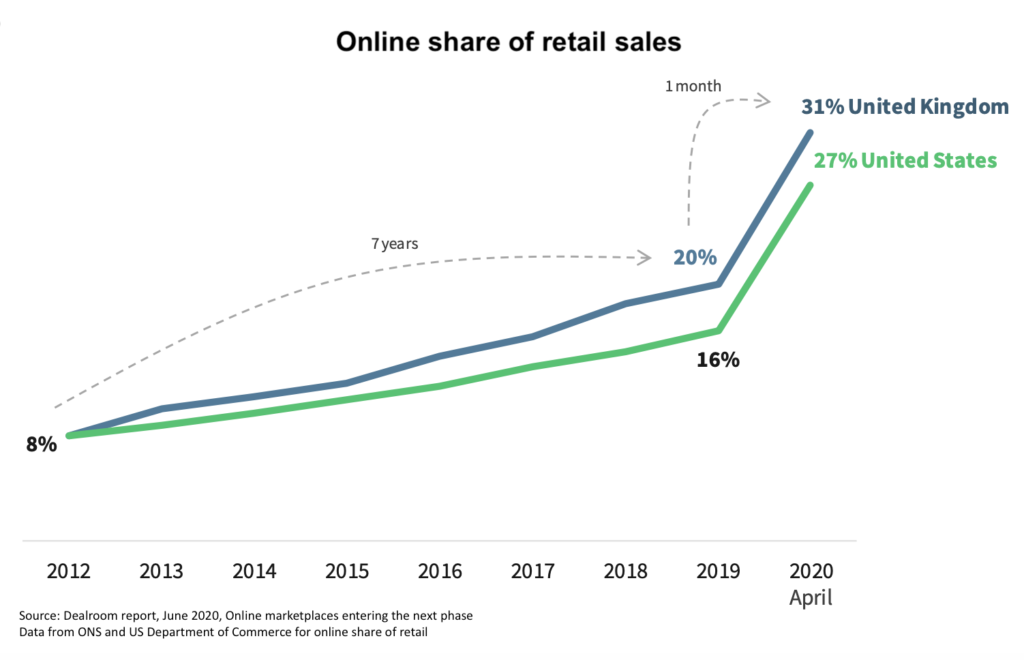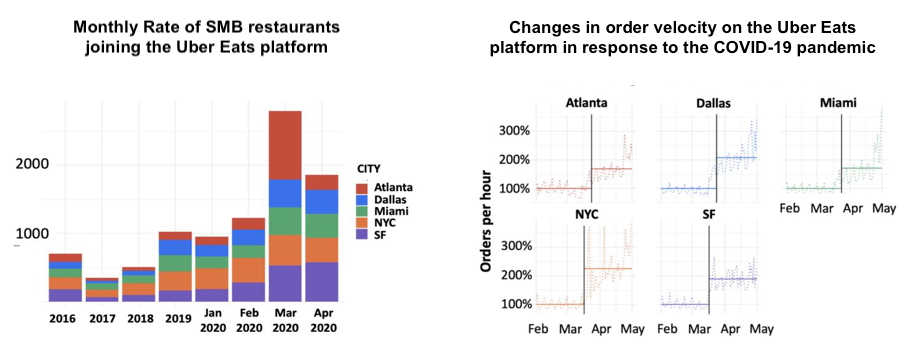The COVID-19 pandemic has been testing times for our economies. Many leaders have announced their intention to make their businesses more resilient. But how? In this article, we examine the case for building platform resilience for the digital economy, and why every leader should consider developing a platform strategy.

Facing the unexpected
It was business as usual on 22 February 2011 in Christchurch, New Zealand when at 12:51PM an earthquake, 6.3 strong on the Richter scale, hit the city. Within 10 minutes after the first hit, 10 further aftershocks, each of a magnitude of 4+ were felt. Water pipes, roads, bridges, power lines, cell phone towers and ordinary phone lines were broken or damaged.
There was a lot of confusion and panic, especially in the centre of the city. People were desperately trying to contact their friends and families, and to get back home. The phone lines and roads almost immediately became jammed. 185 people died, often instantly as large buildings collapsed. Thousands of people were injured.
One word suddenly became more important than all others: resilience.
resilience
/rɪˈzɪlɪəns/
noun
- the capacity to recover quickly from difficulties; toughness.
- the ability of a substance or object to spring back into shape; elasticity.
Two years after the earthquake more than 38% of the organisations said that they were either ‘still recovering’ (30%) or still in ‘survival mode’ (8%). At the other end of the spectrum 22% said they had fully recovered. 27% even said that the earthquake had had a positive impact [1].
So, what explains that in time of crisis some organisations simply fail while others, adapt and even thrive? The difference between these organisations, beyond their sector and exposure to the earthquake, was their resilience in the face of adversity.
Building organisational resilience in a COVID-19 world
Today, as COVID-19 pandemic creates global uncertainty and ravages entire communities, lessons on resilience are incredibly topical and important.
Organisations, like all systems, tend to be designed to work within certain parameters defined by their environment. When environment changes happen, organisations have some limited flexibility to adapt. This is understandable and in fact works very well in most situations. Yet in the current, largely unprecedented circumstances, many organisations are finding themselves having to operate outside of these parameters. They are forced to adapt to a new way of working that better suits the new environmental conditions.
The New Zealand researchers that surveyed and interviewed thousands of organisations in the aftermath of the quake drew key resilience lessons to help organisations cope in times of crisis and thrive in uncertain environments. They found that resilient organisations displayed 3 sets of attributes: strong leadership & culture, effective networks & relationships, and the ability to change.
Crises are all different of course. That’s why it’d be a mistake to plan for the next crisis as if it were likely to be the same as the previous one. Resilience indicators however are relevant across a wide range of unforeseen circumstances since they focus on organisations’ ability to operate in, and recover from, crises.
While physical destruction and sudden health emergencies are generated by earthquakes, the impact of the COVID-19 pandemic crisis will play out differently. The prevention of physical interactions to help contain the virus has had a significant impact on business operations. Some sectors, such as travel and hospitality for example, will need years to recover.
Embracing online models
Everything was already moving online with most organisations at various stages of their digital transformation plans. And suddenly, in just a few weeks, nearly a decade of change happened in the retail industry.

Source: Dealroom, June 2020, Online marketplaces entering the next phase
Of course, this shift was caused by exceptional and temporary closure of shops in these extraordinary times. Yet there is evidence that things will not return to ‘the old normal’. A significant portion of that online shift is structural. Accelerating the digital transformation process already under way and developing the associated platform strategies should now be at the very top of board agendas. Sadly we are seeing some firms responding to the crisis by cutting their platform investments. We believe such moves have negative long-term consequences and will further reduce their resilience and ability to thrive post crisis. This is because digital platforms can help businesses build resilience.
Digital platforms have resilience built-in
Digital platforms, which enable the effective matching of supply and demand, have demonstrated their built-in resilience during COVID-19. In fact, recent valuation analysis shows that companies that benefited the most from the crisis are big tech and digital platform companies. In total, they grew their market cap by more than $400bn while traditional firms lost $130bn.
We believe that platform-based businesses will show their resilience in the medium to long term by further gaining market share against non-platform-based competitors. Look at the car rental industry and compare Hertz and Turo. Hertz filed for bankruptcy and had to reduce its 770,000 car fleet. Its future remains uncertain. Turo, the car sharing platform based in San Francisco, was also deeply impacted. But there are signs of a rebound. In June and July, rides on the platform in the UK jumped 300% from a year earlier. Turo has now brought back furloughed employees and is hiring once again.
Of course, not all digital platforms will survive from this crisis. Those operating in the mobility and hospitality sectors have been severely impacted. But we believe many of them will bounce forward. Firms like Uber, Airbnb or Deliveroo have had to temporarily shut down, reorganise themselves and let staff go. But their agility, compared to their brick and mortar competitors that were often simply closed, has been impressive. Some of them managed to reinvent themselves in just a few weeks. Airbnb launched Online Experiences. BlaBlaCar, the car-pooling scale-up of more than 90 million members across 22 countries, had to virtually shut down overnight. The team launched 2 new services in less than 8 weeks. BlaBlaHelp is a new digital platform that matches trusted helpers with neighbours who need help with their shopping. And BlaBlaRide, a new scooter platform, serves the last mile in urban areas.
‘Re-purposing’ digital platforms
The ability of platforms to quickly reconfigure their ecosystem has been incredibly helpful in a range of contexts.
In the UK the Government recruited in excess of 750,000 volunteers in just 72 hours to supplement the capabilities of the NHS. GoodSAM is originally a medical platform matching cardiac arrest specialists, defibrillators with people in cardiac arrest. The team quickly repurposed the platform in April 2020 to match people in need with volunteers who could help with shopping, collecting medical prescriptions, or talking on the phone. Once a referral comes in, the algorithm automatically matches the person who needs help and a volunteer with a 99.5% success rate. To date, more than half a million of tasks have been completed by NHS volunteer responders.
In France Mirakl launched the StopCOVID19.fr marketplace at the end of March 2020. Mirakl typically focuses on creating marketplaces for retailers to enable them to expand the selection of their websites, enabling third party merchants to list and sell. In collaboration with the French Ministry for the Economy and Finance, Mirakl created in 48 hours a new marketplace aimed to solve the shortage of essential products and materials in hospitals. By the end of June 2020, the marketplace had enabled the transaction of more than 53 million items of PPE equipment.
And this is now a global phenomenon. When stores in China had to close, merchants turned to Taobao Live, Alibaba’s consumer marketplace, to sell their products. Even farmers from rural China started using the platform to sell their fruits and vegetables!
Digital platforms create resilience for their communities
Digital platforms have also helped save many other businesses during lockdown. Let’s look at a recent study on Uber Eats. On the demand side, Uber Eats reported increased customer app activity as restaurant dine-in closed down. On the supply side, it’s a tale of survival for restaurants that adapted to digital. Restaurants that remained open during lockdown despite losing dine-in customers saw an increase in daily platform orders between 21.2% (Miami) to 59.6% (San Francisco). In March 2020, new restaurants joined the platform at a 2.7x higher rate than historical monthly averages. But this new inflow of restaurants was still not enough to balance the higher demand, resulting in order velocity more than doubling (NYC and Dallas).

COVID-19 and Digital Resilience: Evidence from Uber Eats, Manav Raj, Arun Sundararajan, Calum You, 12 June 2020
So, digital platforms are not just resilient themselves. They also provide added resilience to the communities and ecosystem participants they serve.
Building platform resilience for the digital economy: the case for digital platform-powered ecosystems
This crisis has shown that traditional firms that had so far relied heavily on their physical presence will need to speed up their digital transformation programmes. But digital transformation for the sake of moving services online is not enough.
“Resilience is 50% preparation and 50% agility”[2]
Supplementing the core business with digital platform strategies can help adapt to the new emerging economic environment and defend existing positions. This is because platform business models have complementary strengths to traditional models. By combining the best of different business models, established organisations can build more resilient businesses. They become platform-powered ecosystems that reap the rewards of their Platform Strategy.
In particular, a platform strategy helps strengthen a firm’s resilience by:
-
- offering ‘automatic market discovery’ capabilities thanks to a distributed long tail inventory that adapts itself in near real time to changing supply and demand patterns
- creating a more diversified supply network and distribution ecosystem
- enabling the emergence of successful adaptation strategies and spreading them throughout the platform community
- providing more streamlined onboarding of new suppliers/products and clients in times of crisis with, depending on platform design, autonomous fulfilment capabilities
- fostering trust between platform participants to solve help them new emergent problems/challenges
More than ever, traditional organisations need to develop or join digital platform-powered ecosystems to survive and thrive in this new and uncertain economic environment. This starts with embracing a digital first mindset, acquiring key platform skills, and developing a resilient platform strategy.
To learn more
If you’d like to discuss ways to improve your company’s platform resilience for the digital economy, contact us for an initial conversation.
The article has been co-authored by Laure Claire, Benoit Reillier and Justin Coutts with helpful comments and contributions from James Stewart, Francois Coumau and Jean-Marc Frangos who reviewed earlier drafts.
Footnotes
[1] Source: Elora Kay, Charlotte Brown, Tracy Hatton, Joanne R. Stevenson, Erica Seville, John Vargo,, Business recovery from disaster: A research update for practitioners, Australian Journal of Disaster & Trauma Studies, Vol 23. Nb 2, 2019
[2] Source: interviews, resilient New Zealand, 2016
